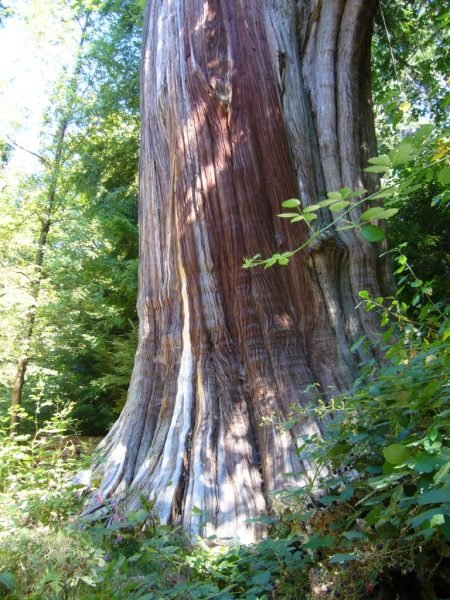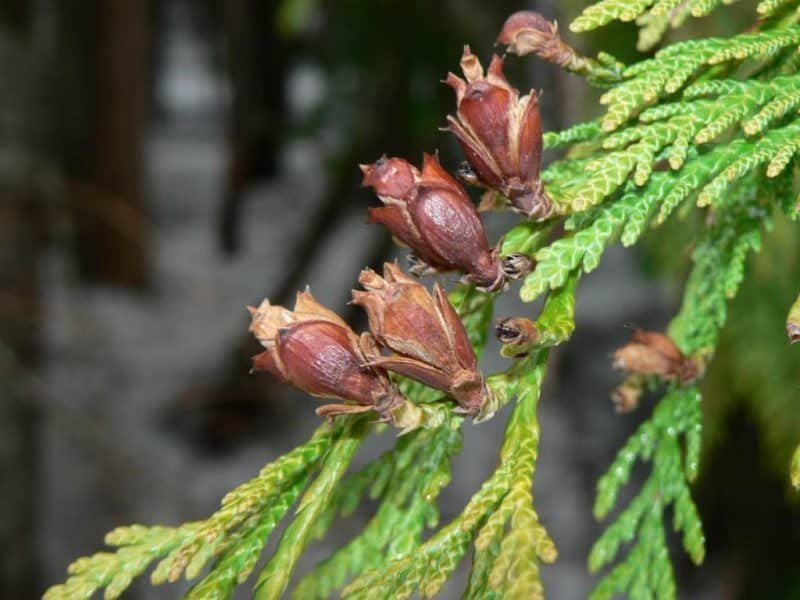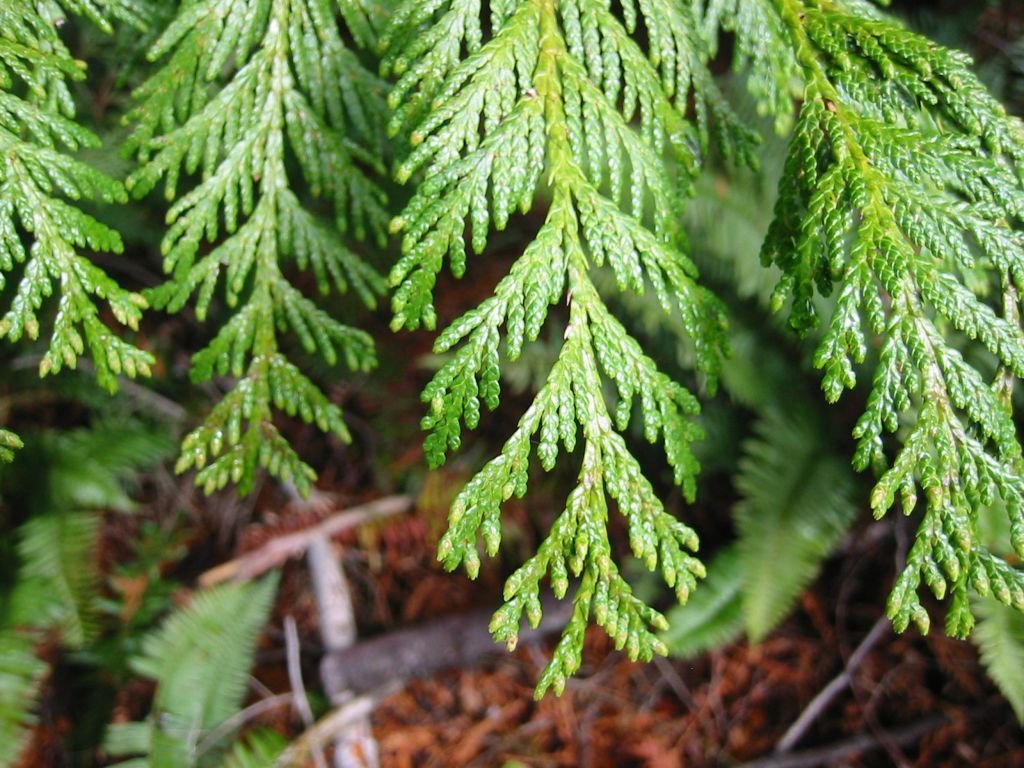Western red cedar (Thuja plicata) is a conifer that can grow higher than 15m tall and wider than 8 metres wide. In this growing guide we’ll learn the cultivation details and how to plant Western red cedar (Thuja plicata).
This plant has several common names including: western red cedar, British Columbia cedar, Californian white cedar, giant arbor-vitae, Nootka Sound arbor-vitae, western arbor-vitae or yellow cypress.
This is a evergreen plant that takes 10-20 years to reach full maturity.
In this article
Plant profile
Common name: western red cedar, British Columbia cedar, Californian white cedar, giant arbor-vitae, Nootka Sound arbor-vitae, western arbor-vitae, yellow cypress
Scientific name: Thuja plicata
Plant type: Conifers, Trees
Habit: Columnar / Upright
Height: Higher than 15m
Spread: Wider than 8 metres
Foliage: Evergreen
Sunlight: Full Sun, Partial shade
Soil: Chalk, Clay, Loam, Sand
Moisture: Moist but well drained, Well drained
Garden type: Architectural
Planting type: Hedging & Screens, Low Maintenance
Seasonal colors
| Season | Stem | Foliage | Flower | Fruit |
|---|---|---|---|---|
| Spring | ||||
| Summer | ||||
| Autumn | ||||
| Winter |

How to plant Western red cedar (Thuja plicata) – Caitriana Nicholson from 北京 ~ Beijing, 中国 ~ China, CC BY-SA 2.0, via Wikimedia Commons
[yarpp template=”yarpp-template-genus” require_tax='{“genus”: 1}’]
How to plant
In this section we will learn how to plant Western red cedar (Thuja plicata), know its needs in terms of soil, watering and sun exposure.
Soil
Western red cedar (Thuja plicata) is a plant that adapts to all types of soils, chalk, clay, loam or sand.
-
The chalky soil is pale and contains chunks of calcium-rich rock. It is a fertile and well-draining soil, almost always alkaline.
-
Clay soil is composed of more than 25 percent clay particles. These particles have a high moisture holding capacity and the soil is heavy to dig and can be waterlogged in winter (dry in summer).
-
The loam soil is dark, rich in organic matter but balanced in minerals. It offers the best of all worlds, retaining enough water for the plants, but allowing excess moisture to drain away. This is the most desired type of garden soil, perfect for most plants.
-
Sandy soil is light, porous and very easy to drain. It is a soil poor in organic matter and nutrients. It is composed of relatively large mineral particles that allow water to drain quickly.
It is not very sensitive to soil acidity or alkalinity and grows well in soils with pH acid, alkaline or neutral.
Regarding drainage, Thuja plicata likes to grow in moist but well drained or well drained soils.
Sunlight
Western red cedar (Thuja plicata) is a plant that should be grown in full sun or partial shade positions.

Cultivation profiles – Growing Western red cedar (Thuja plicata) – Walter Siegmund, CC BY-SA 3.0, via Wikimedia Commons



